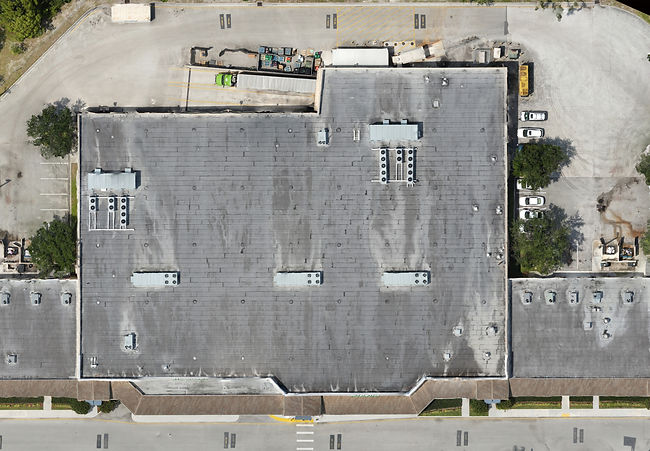
Thermal Roof Survey
Infarred Moisture Survey

Drone thermal imaging for commercial roof inspection can be used in a variety of ways, including:
-
Detecting Leakages: Drone thermal imaging can identify water penetration and wet insulation areas, which are not visible to the naked eye. Thus, the precise location of leakage can be determined so that timely repairs can be carried out to prevent long-term damage to the property.
-
Identifying Moisture Trails: Moisture trails are created when water penetrates a roof, and the moisture accumulates underneath the roofing material. Drone thermal imaging can locate these moisture trails or wet patches easily.
-
Identifying Subtle Temperature Differences: Drone thermal imaging can easily detect temperature differences in flat roofs. The variations in temperature may indicate problems like underperforming HVAC units, damaged insulation, or moisture-related problems.
-
Improved Efficiency: Drone thermal imaging can save time and effort as inspections are carried out much faster than manual inspections. The thermal images can be quickly analyzed, and because drones can access parts and locations that are hard to reach, a thorough and detailed inspection can be carried out in a timely manner.
-
Reporting: Drone thermal imaging can easily produce detailed reporting of the roof inspection. The images can be analyzed by experienced professionals who can make recommendations for repairs or maintenance, mitigating the risk of damage to the property.


Overall, using drone thermal imaging for commercial roof inspection ensures that potential problems are identified at an earlier stage and can lead to increased efficiency and cost savings.

